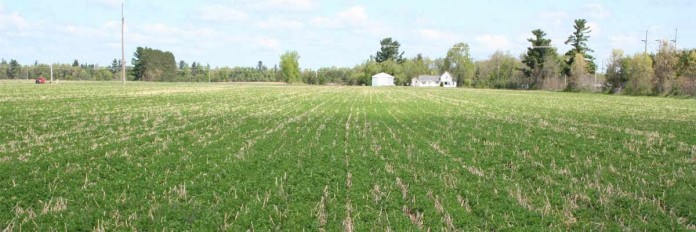I bet if you take a drive into the country you won’t see many fields that aren’t plastered in cover crops from northeast to southeastern Ohio. Well, that is simply because this has been the best year by far for the 22 Soil and Water Conservation Districts in the Muskingum Watershed Conservancy District Area.
The 2015 Cover Crop Program was once again sponsored by the Muskingum Watershed Conservancy District. It allowed for almost 26,000 acres of cover crops to be installed. More acreage. Never before have there been as many cover crops planted in the 22 counties than this past year through this program.
Publicity, such as word of mouth or even the cover crop signs you see along the road by a nice green field, have led to a substantial increase of participation and success in the program.
Area 3 Soil & Water Conservation District Program Specialist Chad Amos sent out an email thanking everyone involved from all 22 counties.
He wrote, “First off, let me thank everyone for their efforts on this year’s program. Some quick addition shows that we will finish the year just shy of 26,000 acres planted! This is no small task and it is something we should all be proud of.”
To go along with the record year, the 2015-2016 winter has been a pretty mild one to say the least. The mild winter has given the cover crops a great success rate as they look better than ever. But it’s not always about the look. With the cover crops standing strong heading into spring, I’m sure they have well exceeded the expectations of most farmers. Tuscarawas County itself has also seen a positive increase from the 2014 year.
Total acres
The 2015 cover crop program, allowed Tuscarawas County producers to fly on or no-till 2,359 acres, compared to 1,391 acres in 2014. The number of producers with approved acreage increased by 4, from 12 to 16.
The load reductions from these cover crops had an enormous increase, as well. The amount of sediment saved this year compared to last year was 11,673 tons versus 8,705 tons. The amount of phosphorus nearly doubled, topping out at 11,767 pounds saved. The nitrogen increased 9,406 pounds this year from 13,717 to 23,123.
This fall will be here before we know it and those wonderful soil-saving cover crops will be going in the ground once again. We hope to make every year better than the past as we strive to enhance the soil health for more productive yields.













